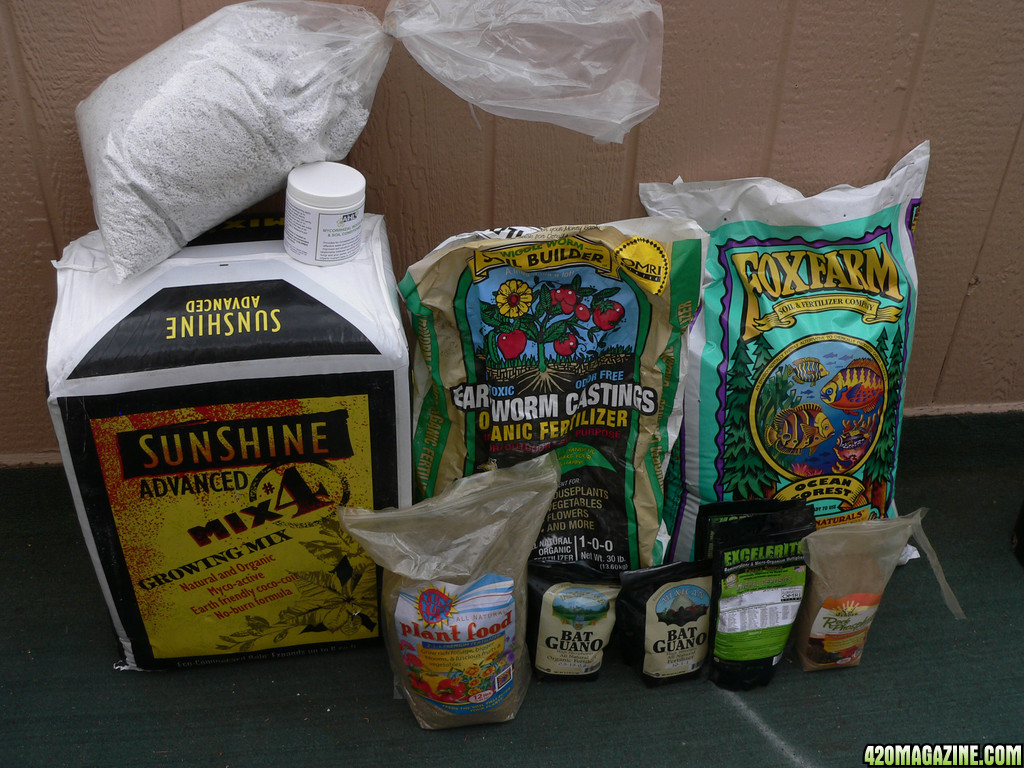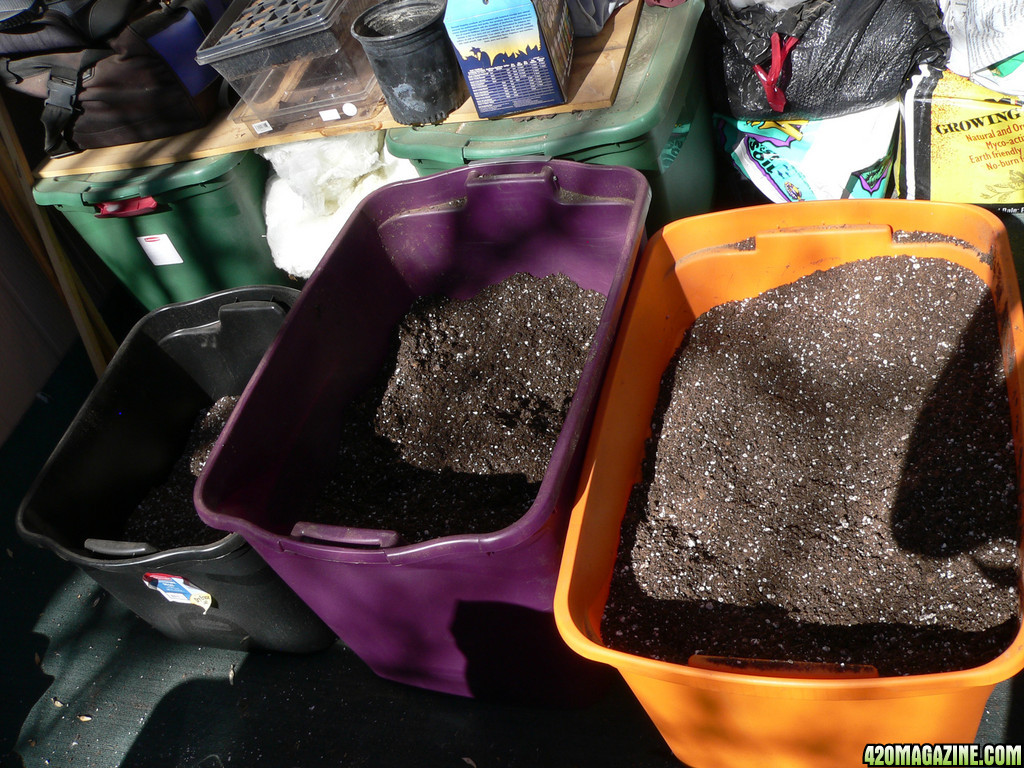Been contemplating the soil on hand supply. If you'd asked me back in November I would've told you I'd run out the soil I amended and go with Doc's kit instead - it's always appealed to me.
The mixes I've made seem to work very well. I'm seeing all the high-brix attributes and have a large stock of amendments on hand. If it ain't broke, don't fix it. Instead I decided to buy more castings, Sunshine #4 and Ocean forest and extend what I have at the same ratios. From now on when soil goes out of a bin, I'm going to replace it with freshly mixed soil. I'm going to stick with three amended soils, one for seedlings, one for vegetative growth, and one for flower. Here is what I use.
For the seedling mix I combined 3 gallons of Sunshine, 1 gallon of FFOH, one gallon of chunky perlite, and 1/2 cup of granulated mixed mycorrizial inoculate. From what I've been reading, seedlings benefit greatly from a soil biota dominated by fungus. There is plenty of food in the FFOH to feed the seedlings, the Sunshine is not nutrient rich at all, and the perlite improves drainage.
The base added to both the veg and flower soils is the same. Nine gallons of Sunshine, three gallons of FFOH, three gallons of worm castings, one and a half gallons of chunky perlite, five cups of Yum-Yum mix, and one cup of Excelerite. Here is a blurb from the Excellerite web-site about this product:
"U.S. Rare Earth Minerals has been blessed with the rights to mine what is widely considered the rarest source of ancient lake bed sediments in Panaca Nevada found to date. A host of scientists recognize it as the richest known source in the world for natural occurring macro, micro and nano nutrients. These minerals and trace elements have been naturally chelated in the presence of Humic and Fulvic acids to produce the powerful combination of Panaca minerals,that we call Excelerite; Excelerite is approved by the Organic Materials Review Institude ( OMRI ) listed, and may be used in certified organic production or food processing and handling according to the USDA National Organic Program Rule.
The only other thing the veg soil gets is 1 cup of 10-1-1 Mexican bat guano.
The flower soil has no Mexican guano. It gets 1 cup of 0.5-13-0.2 Indonesian bat guano, and 1 cup of soft rock phosphate.
I started some tea with a quart of veg soil (before adding new stuff) 1/2 cup Yum-Yum mix, and a tablespoon of molasses. It is bubbling away. Tomorrow I'll use some of the diluted tea to moisten both the veg and flower soils and give the micro-army a slew of new troops.
The veg and flower soil bins are hanging out in the greenhouse where the temperatures are more moderate than the extreme swing seen outdoors here this time of year. The bins work for plant stands. The veg soil hangs out in a bin out on the deck.
I'm somewhat reticent about not running out what I had and trying Doc's kit. The reticence is tempered by the knowledge I gain by reading about soil biology, our favorite plant, and the knowledge I can apply to growing other things besides cannabis.




 I actually came by a week or so ago, but got distracted and never actually posted my comment, so lame I know! Great info about planting the seeds deeper to escape the seed case. I actually used that to sprout some spinach and broccoli recently. I have also heard of people sand the ridge on a cannabis seed to help. I am yet to try this, but it sounds logical. Keep up the beautiful work!
I actually came by a week or so ago, but got distracted and never actually posted my comment, so lame I know! Great info about planting the seeds deeper to escape the seed case. I actually used that to sprout some spinach and broccoli recently. I have also heard of people sand the ridge on a cannabis seed to help. I am yet to try this, but it sounds logical. Keep up the beautiful work!


